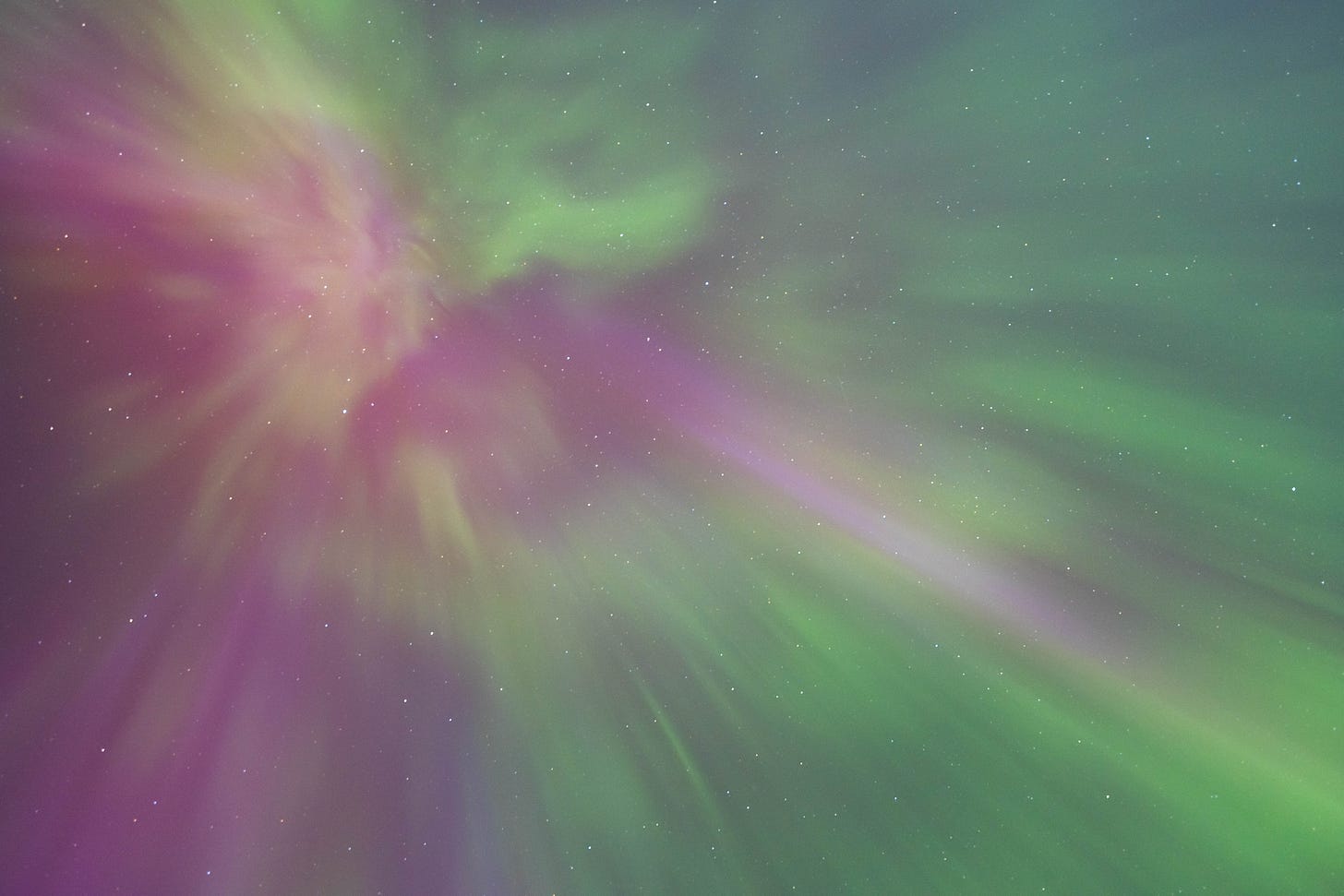A Brief But Spectacular Display of Aurorae
A Class G4 Geomagentic Storm Hits Earth
On the evening of Sept. 16, I was set up to capture some images of the Elephant Trunk Nebula in Cepheus. I balanced and aligned the mount, focused the telescope, queued up the camera, snapped a test image from inside the house, and ... what? The sky appeared washed out as if clouds rolled in. I went back outside, looked up, and WOW...! It wasn’t clouds obscuring the stars, it was a spectacular show of aurorae borealis as a solar coronal mass ejection (CME) hit Earth in the form of a G4-class geomagnetic storm.
The most spectacular outburst ran just ten minutes around 9:20 p.m. MDT. I had just enough time to grab (a different) camera and take a couple of shots and short video. To the eye, much of the aurora appeared green and white, at least from my suburban location. The camera revealed the white areas as red, a color that results from excited oxygen atoms about 150 miles up. The most intense aurorae appeared overhead and seemed to emanate eerily direction from the bright star Vega in the constellation Lyra. The video below shows the display close to its peak - the time scale here is sped up by 8x, so it packs three minutes into about 23 seconds.
It was a brief but spectacular show. Spaceweather.com reports that observers as far south as Arizona saw traces of aurorae. And, as the sun’s cyclical activity approaches a maximum in the coming months, there’s more aurorae on the way over the coming autumn and winter.
And my photos of the Elephant Trunk? It’ll have to wait until next time...


